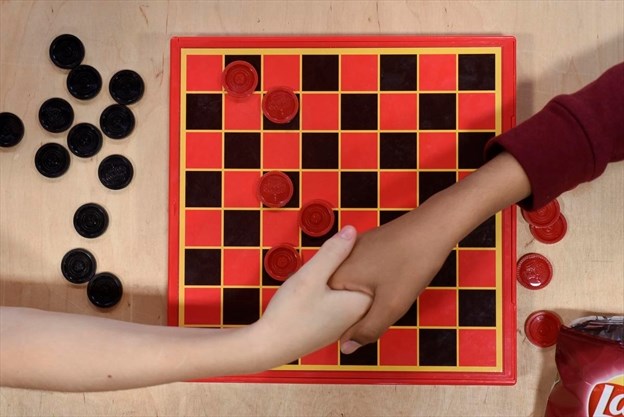Czech Checkers is one of the variants of the game of draughts, popular in the Czech Republic and Slovakia. The goal of this checkers game is to deprive the opponent of the opportunity to move by taking or blocking all his pieces.
Czech Checkers rules
Board and starting position
A board of 8 × 8 squares is placed between players so that the lower left square is black. In the initial position, each player has 12 pieces, placed on black squares of the first three rows.
Moves
- The player with white checkers makes the first move.
- Simple pieces moves diagonally one square forward.
- The king moves any number of squares forward or backward.
- If a simple piece reaches the last row with a normal move or during a capture, then it turns into a king and stops, even if it’s possible to continue the capture.
Captures
- Simple pieces move only forward one square at a time. Taking the opponent’s pieces is obligatory.
- The king, after a capture, is free to choose the empty square he wants to land on in the same diagonal line.
- If there are several options for capturing the opponent’s pieces, the player is free to choose the option to go with.
- If possible, between a simple piece and a king, be sure to capture the king because he is more valuable on the gameboard.
- When capturing, in one move, the opponent’s piece can be jumped over only once. That is, if, during the multi-jump over several enemy pieces, your piece reaches an already captured checker, then you have to stop.
Notation
To record moves, an alphanumeric notation (similar to chess) is used: horizontal rows are denoted by numbers from 1 to 8, and vertical rows are denoted by Latin letters from a to h.
To record the trajectory of a simple checker or king, first write down the field where the checker or king stood, then put a dash and record the field on which it is placed (for example: f4-g5). When recording capture (battle), a colon is placed instead of a dash. The notation f4: h6 means the move from the field f4 to h6 with the capture of the checker standing on the field g5, and f4: h6: f8: c5: g1 – the move with the capture of four pieces.

